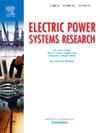Impact of ground-level cool condition during monsoon seasons: Occurrences of isolated breakdown pulse trains discharges and their relationship with ground flashes events in tropical thunderstorms
IF 4.2
3区 工程技术
Q2 ENGINEERING, ELECTRICAL & ELECTRONIC
引用次数: 0
Abstract
These new findings provide detailed understanding into how seasonal monsoon patterns shape the characteristics and behaviour of isolated breakdown pulse (IBP) train discharges and their co-occurrence with ground flashes. Using high-resolution broadband electric radiation field measurements (12.5 to 25 nanoseconds) over a two-second duration, we identified key influences of monsoon variations. Notably, the ground-level cool condition and high humidity during the Northeast monsoon coincided with the IBP train activity. Among 90 samples analysed, most positive IBP train discharges occurred between late evening (6 PM) and midnight (12 AM), while negative IBP train discharges were rare, with only six cases recorded across all monsoon periods. We categorized IBP trains into two types: type-i, consisting of uniform polarity pulses with an average of 19 pulses, and type-ii, featuring a higher average of 95 pulses, followed by sequences of composite bipolar pulses. Interestingly, the occurrence of positive IBP train discharges during storms influenced the production of cloud-to-ground (CG) flashes. Storms with frequent positive IBP train discharges exhibited the highest number of positive CG flashes. Conversely, increased positive IBP train activity corresponded to a reduced percentage of negative CG flashes. These results enhance our understanding of storm electrification dynamics in tropical regions.
季风季节地面凉爽条件的影响:热带雷暴中孤立击穿脉冲序列放电的发生及其与地面闪光事件的关系
这些新发现提供了对季节性季风模式如何塑造孤立击穿脉冲(IBP)列车放电的特征和行为以及它们与地面闪光的共同发生的详细理解。利用高分辨率宽带电辐射场测量(12.5至25纳秒),我们确定了季风变化的关键影响。值得注意的是,东北季候风期间的地面凉爽和高湿与IBP列车活动相吻合。在分析的90个样本中,大多数IBP阳性列车排放发生在深夜(下午6点)和午夜(凌晨12点)之间,而IBP阴性列车排放很少见,在所有季风期间仅记录了6例。我们将IBP序列分为两种类型:i型,由均匀极性脉冲组成,平均有19个脉冲;ii型,具有更高的平均95个脉冲,其次是复合双极脉冲序列。有趣的是,风暴期间IBP正极放电的发生影响了云对地(CG)闪光的产生。频繁出现正IBP列放电的风暴显示出最多的正CG闪光。相反,增加的阳性IBP训练活动对应于减少的负CG闪光百分比。这些结果增强了我们对热带地区风暴电气化动力学的理解。
本文章由计算机程序翻译,如有差异,请以英文原文为准。
求助全文
约1分钟内获得全文
求助全文
来源期刊

Electric Power Systems Research
工程技术-工程:电子与电气
CiteScore
7.50
自引率
17.90%
发文量
963
审稿时长
3.8 months
期刊介绍:
Electric Power Systems Research is an international medium for the publication of original papers concerned with the generation, transmission, distribution and utilization of electrical energy. The journal aims at presenting important results of work in this field, whether in the form of applied research, development of new procedures or components, orginal application of existing knowledge or new designapproaches. The scope of Electric Power Systems Research is broad, encompassing all aspects of electric power systems. The following list of topics is not intended to be exhaustive, but rather to indicate topics that fall within the journal purview.
• Generation techniques ranging from advances in conventional electromechanical methods, through nuclear power generation, to renewable energy generation.
• Transmission, spanning the broad area from UHV (ac and dc) to network operation and protection, line routing and design.
• Substation work: equipment design, protection and control systems.
• Distribution techniques, equipment development, and smart grids.
• The utilization area from energy efficiency to distributed load levelling techniques.
• Systems studies including control techniques, planning, optimization methods, stability, security assessment and insulation coordination.
 求助内容:
求助内容: 应助结果提醒方式:
应助结果提醒方式:


